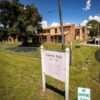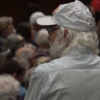By CT Bowen, Tampa Bay Times
TAMPA — After Tampa City Council’s recent apology for the city’s racist history, Hillsborough County commissioners are poised to consider their own initiative declaring racism a public health crisis.
“Hillsborough County’s collective prosperity depends upon the equitable access to opportunity for every resident regardless of the color of their skin,” the resolution reads.
It includes a 10-item action list ranging from promoting equity through all commission-approved policies to encouraging county vendors, contractors and others to provide racial equity training.
The resolution from Commissioner Pat Kemp is modeled after government action in Dallas County, Texas and similar resolutions in Mecklenburg County, N.C., Montgomery County, Md. and DeKalb, Cobb and Gwinnett counties in Georgia.
The idea grew locally from Our Community, Our Voice, a virtual community forum on racism and public health that Bible-Based Fellowship Church in Carrollwood held in June. Some congregants and community members eventually took the issue to Kemp because of her work on affordable housing with Hillsborough Organization for Progress and Equality, said the church’s pastor, the Rev. Anthony C. White, also the group’s co-president.
“I hope the immediate result would be an acknowledgment of systemic racism and the impact it has on communities of color in our county and how that adversely affects all of our citizens,” said White.
But there is a long-term goal beyond awareness.
“I hope it would bring us together as a community in terms of beginning to address the issues more holistically,” he said, adding that the coronavirus pandemic and recent criminal justice issues demonstrate “we’ve got a lot more work that still needs to be done.”
Kemp said data showing COVID-19, the disease caused by the coronavirus, disproportionately causes more serious illness and deaths among Black people than white people made the timing of the resolution appropriate.
Black residents make up 15.5 percent of the state population, but represent 19.4 percent of the Floridians who have died of the virus. And Black residents make up 18 percent of Florida’s population from ages 25 to 44, while representing 44 percent of deaths in the age group, according to state statistics and a New York Times account quoted in the resolution.
“This was just pushing forward what was already an issue. COVID, I think, just kind of shined a light on health inequities and other inequities that are driving the effects in these communities,” said Kemp.
The commission is scheduled to meet virtually at 9 a.m. Wednesday. Kemp said she expected more government resolutions or acknowledgements to be forthcoming.
In June, the commission authorized an equity study for Hillsborough, similar to a 2019 effort that reported Pinellas County lost $3.6 billion in economic output because of racial gaps in income. Last week, Commissioner Kimberly Overman asked to add $25,000 in the upcoming county budget for outreach efforts after the study is completed.
Earlier this month, Tampa City Council unanimously approved a resolution from Council member Orlando Gudes apologizing “for any and all past participation in sanctioning segregation and systemic discrimination of African Americans.”
That vote came a day after Hillsborough Commission Chairman Les Miller Jr., the only Black member of the commission, said he, too, was working to prepare a race-related initiative for the county to consider, perhaps through its 22-member Diversity Advisory Council.
“I don’t think mine’s going to be a resolution,” Miller said Monday. “Mine’s just going to be working together. If we can get people to work together and listen, first and foremost, before we start doing another thing, that’s what I want to do.”
He said he planned to vote for the resolution proposed by Kemp.
“How could I not vote for it? I know health care is a racist issue. I understand it. I’ve known that from day one.’
View the original story here.





